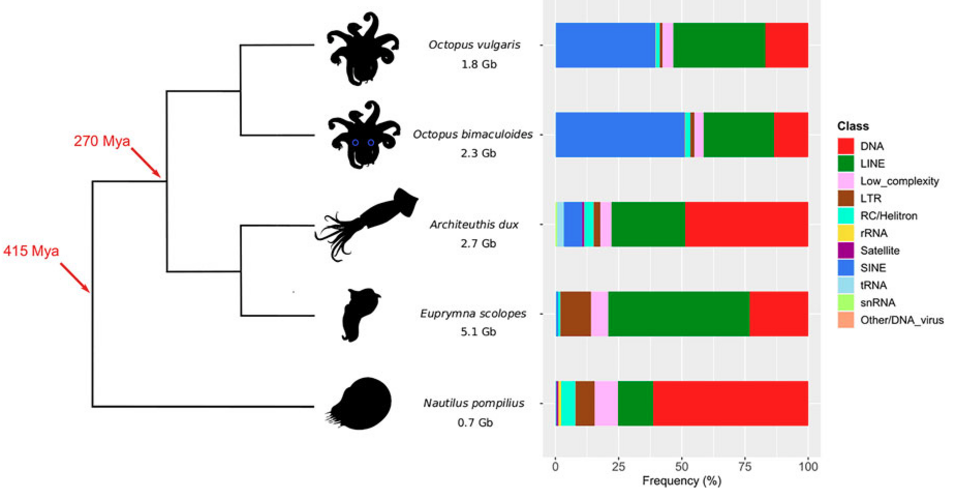In comparison with other molluscs and bilaterians, the genomes of coleoid cephalopods (squid, cuttlefish, and octopus) sequenced so far show remarkably different genomic organization that presumably marked the early evolution of this taxon. The main driver behind this genomic rearrangement remains unclear. About half of the genome content in coleoids is known to consist of repeat elements; since selfish DNA is one of the powerful drivers of genome evolution, its pervasiveness could be intertwined with the emergence of cephalopod-specific genomic signatures and could have played an important role in the reorganization of the cephalopod genome architecture. However, due to abundant species-specific repeat expansions, it has not been possible so far to identify the ancient shared set of repeats associated with coleoid divergence. By means of an extensive repeat element re-evaluation and annotation combined with network sequence divergence approaches, we are able to identify and characterize the ancient repeat complement shared by at least four coleoid cephalopod species. Surprisingly, instead of the most abundant elements present in extant genomes, lower-copy-number DNA and retroelements were most associated with ancient coleoid radiation. Furthermore, evolutionary analysis of some of the most abundant families shared in Octopus bimaculoidesand Euprymna scolopes disclosed within-family patterns of large species-specific expansions while also identifying a smaller shared expansion in the coleoid ancestor. Our study thus reveals the apomorphic nature of retroelement expansion in octopus and a conserved complement composed of several DNA element types and fewer LINE families.

